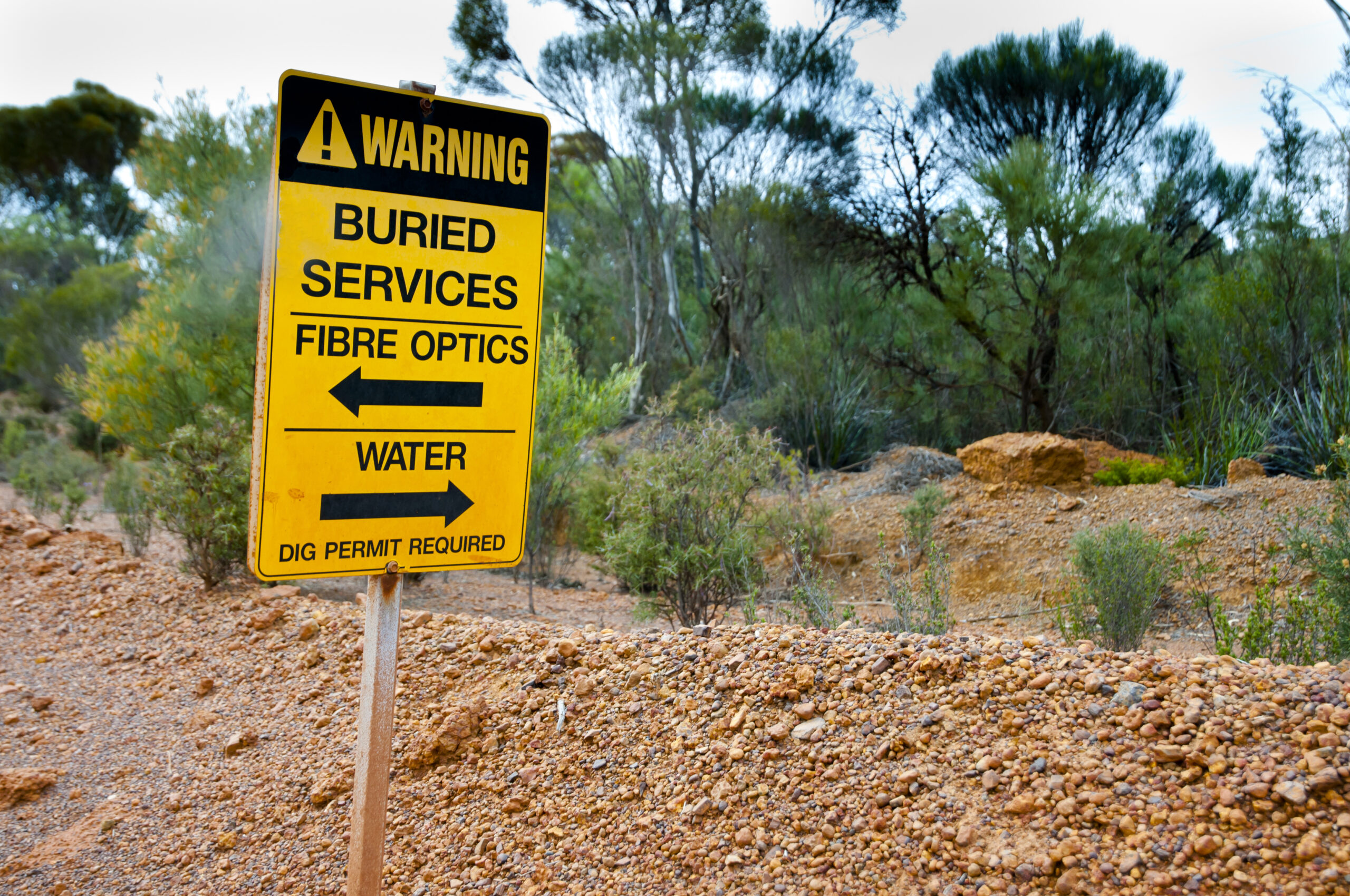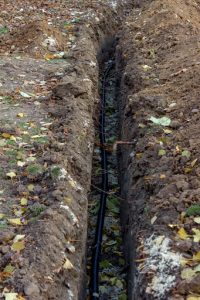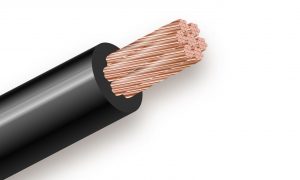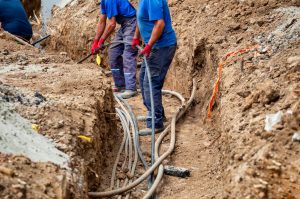
Tips for Specifying or Buying Direct Buried Cable
When it comes to electrical and data installations, one crucial aspect that often goes overlooked is the choice of cable. In particular, selecting the right direct buried cable is essential for ensuring the longevity and reliability of your outdoor wiring projects. Whether you’re an electrician, or someone responsible for a large-scale infrastructure project, understanding the ins and outs of specifying or buying direct burial cable is a fundamental skill.
In this blog, we’ll explore essential tips and considerations to help you make informed decisions when it comes to specifying or buying direct buried cable, ensuring that your outdoor electrical and data connections remain secure, durable, and efficient. Whether you’re tackling an outdoor security installation project, underground wiring, or anything in between, this guide will equip you with the knowledge you need to make the right cable choices.
 What is Direct Buried Cable?
What is Direct Buried Cable?
As the name suggests, direct burial cable (DBC) is designed to go underground. It offers several advantages over regular overhead cable. It makes less of a mess and is safer. Because it is installed underground, direct burial cable is designed to withstand the elements. It must be able to deal with temperature shifts, moisture, and pests over the long term. The added moisture and temperature resistance can make direct buried cable more expensive than standard cabling.
It helps to have a clear idea about which direct burial specs work best for your use case. By balancing rated specs, cost, and local environmental characteristics, you can select buried cables at the cost and protection level you need. There are several key factors to consider when making your decision on what type of direct burial cable to choose.
How Installation Environment Affects Direct Buried Cables
The local installation environment plays a major role in determining the direct burial cable specs you’ll need. Ask yourself the following questions about the location in which you will install the cable:
- What is your local climate like?
- Is your area typically dry with low humidity and relatively little moisture?
- Is the environment wet?
- Will you be laying the cabling near known water sources like ponds, lakes, or rivers?
A harsher local environment will call for more expensive but higher-rated cabling. For instance, PVC jacketing won’t be sufficient in areas where the temperature dips below 20 degrees Celsius. Carefully evaluate your installation environment, and then compare its characteristics against rated cable tolerances to find your ideal direct buried cable specs.
Waterproofing Direct Buried Cable
All direct buried cables offer water resistance. The level of water resistance you need will vary depending on the installation environment. Different levels of water resistance have different strengths and weaknesses.
Tape-Shielding for Direct Buried Cables
Direct burial cables feature one of two kinds of waterproofing: tape-shielding or gel-filled cabling. Tape-shielded cables use multiple layers of dry, waterproof tape to offer a substantial level of waterproofing. To construct the shielding, individual wires are first wrapped in PET. Then a layer of Mylar shielding is wrapped around the bundle to prevent water from contacting wires.
Gel-filled Waterproofing for Burial Cabling
Gel-filled cabling is the alternative to tape-shielded cabling. These cables are filled with a petroleum-based waterproof insulating gel. Should cracks or gashes develop on the cable’s outer surface, the gel is able to seal them up. Gel-filled cables offer significantly better waterproofing than tape-shielded cable. However, the gel substance makes this type of cable more difficult to install and maintain. The gel is highly flammable and is therefore suitable only for outdoor use.
If you’re installing wet-location cables in an area adjacent to water sources, gel-based cabling will likely be a safer choice for use. If you’re installing a direct buried cable in a relatively dry environment, tape-shielded cables will likely offer adequate waterproofing, and will be much easier to handle.
 Choosing The Best Cable Jacketing for Direct Buried Cable
Choosing The Best Cable Jacketing for Direct Buried Cable
There are two primary options when choosing cable jacketing for DBC: PVC cable jacketing and PE cable jacketing. PVC cable jackets can withstand temperatures between negative 20 degrees Celsius to 70 degrees Celsius. This means if you’re laying down cabling in very cold environments where the temperature drops below negative 20 Celsius, PVC cabling isn’t a viable option.
Polyethylene (PE) jackets are somewhat more expensive. However, they remain stable over a much wider range of temperatures. PE jackets can be used in areas where the temperature dips to as low as negative 40 degrees Celsius.
Remee offers both PE and PVC jacketing. If you frequently experience harsh winters and don’t want to run the risk of cable damage, you may want to opt for PE jackets. On the other hand, standard PVC jackets are perfectly suitable for warmer environments, in addition to costing less.
 Wire Insulation For Buried Cables
Wire Insulation For Buried Cables
Your direct burial cabling is an aggregate of multiple wires within its waterproof layers. This means that you will also need to specify the type of wire insulation to be used around the individual conductors.
The NEC (National Electricity Code) defines several types of wire insulation. These differ significantly in terms of cost and performance. This means you’ll need to balance safety, reliability, and cost when deciding on your wire insulation specs.
There are two main types of insulation: THHN/THWN/THWN-2, and XHHW/XHHW-2. THHN and its derivatives are an older spec. XHHW/XHHW-2 cabling is superior technically, although it can be more expensive. Its jacket is thicker and more protective, in addition to being more flexible. When you’re deciding between these two types of wire insulation for your direct buried cable, it’s important to consider the installation environment. If you need superior water and heat resistance and a wider temperature range, XHHW may be the best choice. You should also consider the kind of cable jacketing in use.
Power and Data Requirements for Buried Cables
If you need to transmit data in addition to power through your cables, Power over Ethernet (PoE) can help you cut down on the number of cables you need to use, as well as save on electrical hardware and installation costs. PoE allows you to deliver data and power to supported devices. While security cameras have long used PoE, an increasing amount of hardware is beginning to support this technology.
If you want to directly bury an Ethernet cable in order to deliver PoE, you’ll want to consider using Category 6a cabling. Technically, a range of Ethernet cable standards, including Cat 5e and Cat 6 cables, support power over Ethernet, but Cat 6a is particularly well suited for PoE use.
Category 6a cabling features a larger diameter, especially compared to Cat 5e. Smaller-bore Cat 5e cables are more prone to power loss, making them less efficient. If you’re burying a lengthy section of cable, this can become a serious issue. When directly burying Cat 6 cables, make sure your cables are rated specifically for outdoor use. Remee offers several options that include water blocking gel, water blocking tape, and shielded or messenger PE jackets.
In addition, Remee offers its Activate™ Powered Cable Solutions which include hybrid copper and fiber optic cables as a composite cable construction. The big advantage of Activate PCS cables is the extended transmission distance that can be achieved, well beyond the limitations of standard PoE cables. Remee offers its Activate PCS cables with various jacket, insulation, shielding and water-blocking options to suit direct burial requirements.
Choosing the Right Direct Buried Cable
It can be difficult to find the right direct buried cabling. Specs can vary significantly for custom cables, and your local environment plays a huge factor in choosing the right cable. Fortunately there are custom cable experts, like Remee Wire and Cable.
Remee Wire and Cable is a US based custom cable manufacturer that produces cabling for a variety of industries. As a family owned business we provide customer support like a small business while providing the benefits of a large cable manufacturer.
Remee offers a wide range of direct burial cabling. Talk to us—we can help you find the direct buried cable that’s right for your use case.